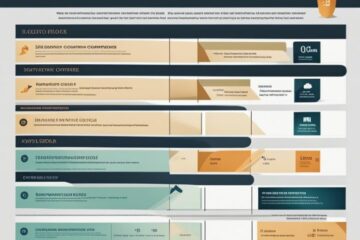Improvement in your customer experience strategy is crucial for any business looking to succeed in today’s competitive market. A well-crafted customer experience strategy can be the difference between loyal, repeat customers and dissatisfied, one-time buyers. To help you enhance your approach, we’ve compiled a list of 10 vital ways to elevate your customer experience strategy.
From personalizing interactions to implementing omni-channel communication, these strategies are designed to enhance customer satisfaction, increase brand loyalty, and drive revenue growth. Each point will give you valuable insights into how you can differentiate your business and stand out from competitors by prioritizing the customer experience.
Whether you are a small startup or an established enterprise, incorporating these innovative techniques can help you create meaningful connections with your customers and build a reputation for exceptional service. Let’s probe these effective strategies and take your customer experience to the next level.
Key Takeaways:
- Understand Your Customers: Prioritize understanding your customers’ needs, preferences, and pain points to tailor your customer experience strategy accordingly.
- Personalize Interactions: Implement personalized solutions and communication to create a more engaging and memorable experience for your customers.
- Seamless Omni-Channel Experience: Ensure a seamless experience across all touchpoints to provide consistency and convenience for your customers.
- Empower Your Employees: Invest in training and empowering your employees to deliver exceptional customer service that aligns with your customer experience strategy.
- Collect and Act on Feedback: Regularly gather feedback from customers to identify areas for improvement and make necessary adjustments to enhance their experience.
- Focus on Customer Journey Mapping: Map out the entire customer journey to identify pain points and opportunities for improvement at each stage.
- Stay Ahead of Trends: Keep up to date with industry trends and innovations to incorporate new technologies and strategies that can enhance your customer experience.
Understand Customer Needs
Gather feedback actively
For a successful customer experience strategy, it is crucial to actively gather feedback from your customers. This can be done through various channels such as surveys, social media, and direct interactions. By actively seeking out feedback, you demonstrate to your customers that their opinions are valued and that you are committed to improving their experience.
Setting up a structured feedback system can help you collect data in a systematic manner. Encourage customers to provide their feedback by offering incentives or making the process as easy as possible. Note, the more feedback you gather, the more insights you will have into your customers’ needs and preferences.
Actively listening to customer feedback shows that you are dedicated to meeting their expectations and are willing to make changes to enhance their experience. Use this valuable information to identify areas for improvement and make strategic decisions that align with your customers’ desires.
Analyze customer data
When considering understanding customer needs, data analysis is crucial. By collecting and analyzing data on customer behavior, preferences, and interactions with your brand, you can gain valuable insights into what drives their decisions. Utilize customer relationship management (CRM) tools and analytics software to track and evaluate this data effectively.
Identifying patterns and trends in customer data can help you anticipate their needs and tailor your products or services to better meet their expectations. By segmenting customers based on their buying behavior or demographics, you can personalize their experience and create targeted marketing campaigns that resonate with their interests.
Understanding your customers’ needs through data analysis enables you to make informed business decisions that are aligned with their preferences. This proactive approach can lead to increased customer satisfaction and loyalty, ultimately driving long-term success for your business.
Needs: To truly understand your customers’ needs, it is crucial to combine active feedback gathering with thorough analysis of customer data. This comprehensive approach will provide you with the insights needed to create a customer experience strategy that is tailored to their preferences and expectations.
Personalize Interactions
Customize communication
One way to improve your customer experience strategy is to customize communication with your customers. By addressing them by their names and personalizing your interactions, you can make them feel valued and important. Using their purchase history and preferences to tailor your messages can also help create a more engaging and relevant conversation. Moreover, understanding how and when your customers prefer to be contacted can enhance your communication strategy and build stronger relationships with them.
Offer tailored solutions
You’ll want to go beyond just customizing communication and offer tailored solutions to your customers. By understanding their unique needs and preferences, you can provide personalized recommendations and solutions that address their specific concerns. This can lead to higher satisfaction levels and increased loyalty from your customers. Additionally, offering tailored solutions can help differentiate your brand from competitors and position your business as a customer-centric organization.
Offering tailored solutions means going the extra mile to anticipate and meet your customers’ needs. This involves actively listening to their feedback, analyzing their behavior, and using data-driven insights to provide personalized recommendations. By demonstrating that you understand and care about your customers, you can create memorable experiences that foster long-term relationships and repeat business.
Streamline Processes
Simplify purchasing steps
Streamline your customer experience by simplifying the purchasing steps on your website or in-store. Unlike the traditional complicated checkout process, where customers must jump through hoops to make a purchase, a streamlined process makes it easy for them to complete their transactions quickly and efficiently. Eliminate unnecessary steps and unnecessary forms that can frustrate customers and lead to abandoned carts. By simplifying the purchasing steps, you not only enhance the overall customer experience but also increase the chances of conversion.
Reduce wait times
Processes that involve long wait times can be detrimental to the customer experience. Streamlining your operations to reduce wait times can significantly improve customer satisfaction. Whether it’s waiting in line at a retail store or waiting for a response to an online inquiry, customers value their time and expect prompt service. By implementing efficient systems and processes, you can reduce wait times and show your customers that their time is valuable to you.
Plus, minimizing wait times can also lead to increased customer loyalty and positive word-of-mouth recommendations. When customers have a seamless and efficient experience with your brand, they are more likely to become repeat customers and advocates for your business. By reducing wait times, you not only improve the customer experience in the moment but also build long-term relationships with your audience.
Implement Omnichannel Support
Unify communication channels
After recognizing the importance of integrating various communication channels to enhance customer experience, it is crucial to unify these channels. This means creating a seamless experience for customers across channels such as email, phone, live chat, social media, and more. By consolidating these channels into a single platform, businesses can ensure that customers can easily switch between channels without any disruptions. This approach not only simplifies the customer journey but also allows for a more personalized and efficient interaction.
Channels like email and live chat offer asynchronous communication, while phone calls and social media provide a more immediate response. By unifying these channels, businesses can cater to different customer preferences and needs, ultimately leading to a more satisfying experience. This integration also allows for better tracking and management of customer interactions, leading to quicker issue resolution and improved customer satisfaction.
Implementing omnichannel support requires a robust technology infrastructure that can handle the seamless flow of information between different channels. It is crucial to invest in tools and systems that enable this integration while also ensuring data security and compliance. By unifying communication channels, businesses can better understand their customers’ needs and preferences, ultimately leading to a more cohesive and effective customer experience strategy.
Provide consistent service
Assuming a customer interacts with your business through multiple channels, it is imperative to provide consistent service across all touchpoints. This means ensuring that the customer receives the same level of support and information regardless of the channel they choose to engage with. Consistency in service builds trust and credibility with customers, showing that your business values their time and loyalty.
Plus, consistent service helps in maintaining brand reputation and loyalty. Customers who receive a consistent experience are more likely to become repeat buyers and brand advocates. On the other hand, inconsistent service can lead to confusion, frustration, and ultimately, customer churn. By prioritizing consistency in communication, tone, and resolution across all channels, businesses can strengthen their customer relationships and improve overall satisfaction levels.
Providing consistent service requires thorough training of customer service teams, implementing standardized processes, and utilizing technology to track and monitor interactions. By setting clear guidelines and expectations for service delivery, businesses can ensure that every customer touchpoint aligns with their brand values and goals. Consistent service is a cornerstone of a successful omnichannel support strategy and is key to enhancing the overall customer experience.
Train Your Staff
Enhance Product Knowledge
To improve your customer experience strategy, you need to ensure that your staff is equipped with in-depth knowledge about your products or services. Training your employees to have a comprehensive understanding of what you offer can help them provide accurate information to customers, thereby building trust and credibility. When your staff is well-versed in the features, benefits, and unique selling points of your offerings, they can effectively address customer queries and recommend suitable solutions.
Regular training sessions and updates on new products or services can keep your staff informed and up-to-date. Encourage team members to ask questions, participate in product demonstrations, and engage in role-playing scenarios to enhance their product knowledge. By investing in ongoing training, you can empower your employees to deliver exceptional customer service and create memorable experiences for your customers.
Furthermore, having a team that is knowledgeable about your products can lead to upselling and cross-selling opportunities. When staff members are confident in their product knowledge, they can suggest complementary items or upgrades that meet the customer’s needs, ultimately increasing sales and customer satisfaction.
Teach Customer Empathy
Even with extensive product knowledge, training staff in customer empathy is crucial for a successful customer experience strategy. Empathy involves understanding and sharing the feelings of your customers, putting yourself in their shoes, and showing genuine care and concern. Empathetic interactions can help build rapport, diffuse tense situations, and foster long-term customer loyalty.
You can create role-playing exercises or scenarios that mimic real customer interactions to help employees practice empathy. Encourage active listening, acknowledging the customer’s emotions, and offering solutions that cater to their needs. By prioritizing empathy in your training program, you can cultivate a customer-centric culture within your organization and differentiate your brand from competitors.
You can also incorporate feedback mechanisms to assess staff performance in empathetic customer interactions. Regularly review customer feedback, conduct surveys, and provide constructive criticism to help employees enhance their empathy skills. Be mindful of, empathy is not just a soft skill but a powerful tool that can transform customer relationships and drive business growth.
Use Technology Wisely
Adopt Helpful Tools
All businesses can benefit from utilizing technology to improve their customer experience strategy. If you want to stay ahead of the competition and meet your customers’ expectations, consider adopting helpful tools such as customer relationship management (CRM) software, live chat support, and social media management platforms. These tools can help you streamline communication, track customer interactions, and provide personalized support to enhance the overall customer experience.
Automate Repetitive Tasks
If you want to free up your team’s time to focus on more complex customer needs, consider automating repetitive tasks. Some examples of tasks that can be automated include order confirmations, appointment reminders, and payment processing. By implementing automation technology, you can improve efficiency, reduce errors, and provide faster response times to your customers.
This strategy of automating repetitive tasks not only saves time and resources but also ensures consistency in customer interactions. By setting up automated workflows, you can create a seamless experience for your customers from the moment they make a purchase to post-sale support. This level of efficiency and reliability can help build trust and loyalty with your customer base.
Create Reward Programs
Offer Exclusive Benefits
Many businesses understand the importance of creating reward programs to improve customer experience. By offering exclusive benefits to loyal customers, you can incentivize continued engagement and increase customer retention. These exclusive benefits can range from discounts on future purchases to access to special events or early product releases. By making customers feel valued and appreciated, you create a sense of belonging and reinforce their loyalty to your brand.
Any successful reward program should be designed with the customer in mind. Conduct research to understand what your target audience values most and tailor your offerings to meet their needs and preferences. By providing relevant and desirable rewards, you can increase the effectiveness of your program and drive customer engagement. Make it easy for customers to participate and redeem rewards to ensure a positive experience.
It’s important to regularly evaluate and update your reward programs to keep them fresh and appealing. Solicit feedback from customers to understand what is working well and what can be improved. By staying responsive to customer needs and preferences, you can maintain a strong connection with your audience and drive long-term loyalty.
Foster Customer Loyalty
An effective customer experience strategy should aim to foster customer loyalty, as loyal customers are more likely to make repeat purchases and recommend your business to others. By investing in initiatives that prioritize customer satisfaction and retention, you can build a loyal customer base that serves as a foundation for long-term success.
By creating personalized experiences and actively listening to customer feedback, you can demonstrate your commitment to meeting their needs and building meaningful relationships. Offer rewards and incentives that are tailored to individual preferences and behaviors to strengthen the bond between customers and your brand. Encourage customer engagement through various channels and touchpoints to provide a seamless and enjoyable experience.
Regular communication with customers and personalized interactions can help you anticipate their needs and proactively address any issues or concerns. By building trust and rapport with your audience, you can cultivate a loyal following that will support your business through thick and thin.
Request And Act On Feedback
Solicit honest opinions
Despite the widespread availability of customer feedback mechanisms, many businesses fail to make the most of this valuable resource. An imperative part of improving your customer experience strategy is proactively seeking feedback from your customers. Encourage customers to share their honest opinions about their experiences with your products or services. Whether it’s through surveys, online reviews, or direct conversations, listening to what your customers have to say can provide valuable insights into areas that need improvement.
An effective feedback system not only collects input from customers but also acknowledges and addresses their concerns. Customers appreciate when they feel heard and see that their feedback has led to positive changes in your business. By actively soliciting and acting on honest opinions, you demonstrate to your customers that their satisfaction is a top priority.
Continuously seeking feedback allows you to stay agile and responsive to changing customer needs and preferences. Your customer experience strategy should be a dynamic process that evolves based on the insights gathered from customer feedback. By creating a culture of open communication and receptiveness to feedback, you can foster stronger relationships with your customers and improve loyalty to your brand.
Make noticeable improvements
Little changes can make a big difference in how customers perceive your brand. To enhance your customer experience strategy, it’s crucial to not only gather feedback but also take visible actions to address areas for improvement. Whether it’s implementing a new feature based on customer suggestions or revamping a process to streamline the customer journey, making noticeable improvements shows customers that you value their feedback and are committed to providing them with the best experience possible.
To make noticeable improvements, you can prioritize feedback that highlights common pain points or areas of dissatisfaction among customers. Identifying these key areas allows you to focus your efforts on making impactful changes that address the root causes of customer frustration. By actively listening to customer feedback and making visible improvements, you can enhance your brand reputation and build customer trust and loyalty.
Foster Community
Build Brand Advocates
Once again, creating a strong sense of community around your brand is crucial for improving your customer experience strategy. One effective way to do this is by building brand advocates. These are loyal customers who not only support your business but also actively promote it to others. Brand advocates can be your most powerful asset, as their positive word-of-mouth can significantly impact your reputation and attract new customers.
For companies looking to cultivate brand advocates, it’s imperative to provide exceptional customer service and consistently exceed expectations. By delivering a memorable and positive experience at every touchpoint, you can turn satisfied customers into dedicated brand advocates who are eager to share their experiences with others. Encouraging feedback and engaging with your customers on a personal level can also help foster loyalty and build lasting relationships.
Building brand advocates also involves creating opportunities for customers to connect with each other and share their experiences. This can be done through online forums, social media groups, or customer appreciation events. By fostering a sense of community among your customers, you can empower them to become advocates for your brand and help spread positive word-of-mouth.
Encourage Customer Interaction
With the rise of social media and online reviews, customer interaction has never been more important. Businesses must actively engage with their customers across various channels to build relationships and gather valuable feedback. Encouraging customer interaction can help you gain insights into their needs and preferences, allowing you to tailor your products and services to better meet their expectations.
To encourage customer interaction, businesses can leverage social media platforms, live chat support, and interactive content. These tools enable real-time communication and personalized interactions that can enhance the overall customer experience. By listening to customer feedback and responding promptly to inquiries, businesses can show that they value their customers’ opinions and are committed to providing top-notch service.
To foster a sense of community and encourage customer interaction, businesses should create opportunities for customers to engage with each other as well. This can include hosting events, facilitating discussions on social media, or implementing loyalty programs that reward customers for their engagement. By prioritizing customer interaction and community-building, businesses can create a more engaging and memorable customer experience.
Monitor Competitors
Stay market aware
Not paying attention to your competitors can be a critical mistake in today’s fast-paced business environment. Your competitors are constantly evolving and adapting to meet changing customer demands, so it is important to stay market aware. By monitoring your competitors, you can stay up-to-date on industry trends, pricing strategies, and new product launches. This information can give you a competitive edge and help you make informed decisions about your own customer experience strategy.
Some ways to stay market aware include setting up Google Alerts for your competitors, following them on social media, attending industry events where they may be present, and conducting regular competitive analysis. Keeping a close eye on your competitors can also help you anticipate potential threats and identify opportunities for collaboration or differentiation.
Being proactive in monitoring your competitors can help you stay ahead of the curve and position your business as a leader in customer experience. Embrace competition as a driving force for innovation and improvement, rather than a source of fear or intimidation.
Learn from others
Not only should you monitor your direct competitors, but you should also learn from others in the industry who are excelling at customer experience. Studying successful companies can provide valuable insights and inspiration for your own strategy. Look beyond your immediate competitors to businesses in different sectors that are known for their exceptional customer service.
Some companies are known for their innovative approaches to customer experience, such as Zappos with its focus on wow-factor service or Disney with its emphasis on creating magical moments. Being aware of best practices in the industry can help you adapt and improve your own customer experience strategy.
With a mindset of continuous learning and improvement, you can leverage the experiences and successes of others to strengthen your customer experience strategy. Stay open to new ideas and be willing to take risks in order to differentiate your business and delight your customers.
To wrap up
Drawing together the various strategies and tactics discussed in this article, it becomes clear that enhancing the customer experience is a multifaceted endeavor that requires a comprehensive approach. By prioritizing customer feedback, personalizing interactions, and leveraging technology, businesses can create a seamless and enjoyable customer journey that fosters loyalty and drives growth.
Additionally, fostering a customer-centric culture, investing in employee training, and continuously evaluating and refining your customer experience strategy are important components of success in today’s competitive marketplace. By staying attuned to customer needs and preferences, businesses can adapt and evolve their approach to ensure long-term success and sustainability.
Hence, implementing these 10 ways to improve your customer experience strategy can help businesses differentiate themselves, build customer trust, and ultimately drive revenue and profitability. By putting the customer at the center of all business decisions and constantly seeking ways to enhance their experience, companies can create lasting relationships that lead to sustained success in the ever-evolving landscape of customer expectations.
FAQ
Q: Why is customer experience strategy important?
A: Customer experience strategy is important because it helps businesses build strong relationships with customers, increase customer loyalty, and drive business growth.
Q: What are the key components of a customer experience strategy?
A: The key components of a customer experience strategy include understanding customer needs, improving customer interactions, and measuring customer satisfaction.
Q: How can businesses improve their customer experience strategy?
A: Businesses can improve their customer experience strategy by implementing omni-channel support, personalizing customer interactions, and collecting feedback to make data-driven decisions.
Q: What role does technology play in customer experience strategy?
A: Technology plays a crucial role in customer experience strategy by enabling businesses to streamline processes, gather customer data, and deliver personalized experiences at scale.
Q: How can businesses measure the success of their customer experience strategy?
A: Businesses can measure the success of their customer experience strategy by tracking key performance indicators such as Net Promoter Score (NPS), Customer Satisfaction Score (CSAT), and Customer Effort Score (CES).
Q: What are some common challenges businesses face when implementing a customer experience strategy?
A: Some common challenges businesses face when implementing a customer experience strategy include siloed departments, lack of employee buy-in, and difficulty in creating a seamless customer journey across all touchpoints.
Q: How can businesses stay ahead in the ever-evolving customer experience landscape?
A: Businesses can stay ahead in the ever-evolving customer experience landscape by staying informed about industry trends, leveraging emerging technologies, and continuously adapting their strategies based on customer feedback and market changes.









